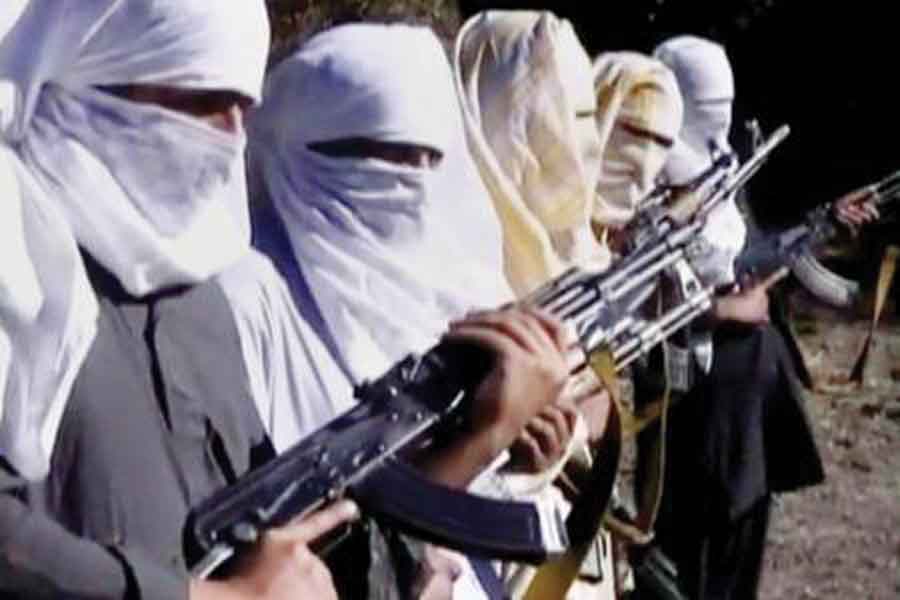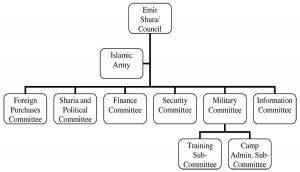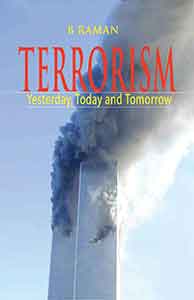The global community has witnessed transformations in terror groups across the spectrum. These transformations can be attributed to various external changes that force the terror groups to change internally. For a commoner’s eye, these changes do not mean much. But if we are to study these changes, we would be better placed to appreciate the systematic thought process behind each and every change that takes place in terror groups. Terrorists have shown extraordinary intelligence by adapting business concepts like creating interchangeable missions, redefining organisational structures and forming strategic alliances to run their organisations efficiently. This paper attempts to study this important facet of managing “change” by terror groups effectively, which is akin to the process of change management and organisational dynamics in legitimate business enterprises.
The irony is that law enforcement efforts have proved to be counterproductive, forcing these groups to transform themselves into virtual networks and making it much harder to detect and disrupt them.
The external environment is one of the important variables that have posed serious challenges to many entities. While some have survived, many have perished. Many start-ups led by energetic entrepreneurs have failed to take off while some crash-landed after take off. But one business which has grown by leaps and bounds in spite of an adverse environment is “The business of terror.” It is quite surprising to observe that terror groups, by and large, have been successful despite being illegal, functioning with illicit finance and being manned by outlawed persons while many a legal entity, with lawful objectives, funded by legitimate means and managed by genuine businesspersons, has failed. It is this reason which makes it all the more imperative to study a terror group’s growth trajectory and its survival abilities in spite of facing a hostile environment with very demanding and challenging deliverables. A terror group derives its resilience from its networks and organisational structure, complemented well by innovative methods led by individual brilliance. However, recent developments in technology have also helped terror groups to be more resilient.
The study on how a terror group functions with respect to its key functions will throw a better light on the grey areas surrounding it. Terrorist groups have transformed and evolved, innovating in the process. Strategic alliances like mergers, joint ventures and partnerships through franchises act as force multipliers. Their innovative recruitment policies and people centric motivation methods are their core areas of strength. The groups have grown under the tutelage of their leaders, who have shown tremendous leadership abilities. Hypothetically, if Osama Bin Laden and Vellupillai Prabhakaran had led a legal set-up, they would have been put on the same pedestal as Bill Gates, Warren Buffet and Steve Jobs.
Transformation of Al-Qaeda
Like any business, terrorist organisations require three things: capital, labour and a brand or a mission.2 In other words, terrorists need financial capital, human capital and intellectual or knowledge capital to support their mission. How well all these are put to best use and managed determines the success or failure of an organisation. The ability of a terror group can be measured by how fast it adapts to changes in the external environment and internal changes. In a terror group, most internal changes are a direct result of changes in the external environment. One such group that has managed to change effectively in an ever-changing external environment is al-Qaeda, evolving in the following ways:
Like any business, terrorist organisations require three things: capital, labour and a brand or a mission.
- Maintaining a dynamic intra- and inter-organisational structure and network
- Evolving mission values
- Ensuring infusion of fresh blood globally
- Maintaining a diversified financial network
- Encouraging strategic innovations aided by technological advancement
Dynamic Intra- and Inter-Organisational Structure and Network
Contemporary terror organisations follow two types of organisational structures, hierarchical and network. Al-Qaeda started as an organisation with a commander-cadre structure with a vertical leadership structure that provides strategic direction and tactical support to its horizontal network of compartmentalised cells and associate organisations.3 After 9/11, much of its infrastructure has been obliterated. Some experts believe that al- Qaeda transformed from a hierarchical to a flat structure, or a network structure. Law enforcement efforts have forced al-Qaeda to transform itself into loose networks, which ultimately led to a virtual network.4
There are some paradoxical views to this such as the fact that a command-cadre structure suits the organisation’s goals more than a network-based structure and has kept al-Qaeda from collapsing in spite of it facing heavy odds.5 While a hierarchical set-up gives the central leadership better control over its operations and subjects, it is much more susceptible and prone to disruption. Since 2001, al-Qaeda has lost four heads of the Military Committee, four chiefs of the Special Operations Unit, and at least half a dozen of senior regional field commanders.6 Yet, it has always found replacements for these cadres and maintained the status quo as the most deadly terror group in the world.
After 9/11, al-Qaeda retained a hierarchical structure at its super structure level whereas it chose a flat network for its next level sub-structures. It also chose to decentralise its links with its affiliates and other groups. The hierarchical super structure allowed Bin Laden to ensure control over flow of information, resources and status. At the same time, virtual sub-structures ensured the resilience of the lower strata, which carry out operations. The very fact that it has been able to find replacements without compromising on the structural integrity and efficiency of its operations is ample testimony to the fact that the structural evolution of al-Qaeda has been successful at the super-structure level. Al Qaeda’s organisational structure is depicted in Figure below.
- Shura/Advisory Council: Osama bin Laden’s inner circle; director of the overall strategy of the organisation
- Sharia/Political Committee: Responsible for issuing fatwas
- Military Committee: Responsible for conceiving and planning operations, as well as managing training camps
- Finance Committee: Responsible for fundraising and concealment of assets
- Foreign Purchases Committee: Responsible for the acquisition of foreign arm and supplies
- Security Committee: Responsible for physical protection, intelligence and counter-intelligence
- Information Committee: In charge of propaganda
Since 2001, al-Qaeda has lost four heads of the Military Committee, four chiefs of the Special Operations Unit, and at least half a dozen of senior regional field commanders. Yet, it has always found replacements for these cadres and maintained the status quo…
After 9/11, al-Qaeda’s centre, or core, weakened, but it overcame this lacuna by fully outsourcing terror globally through a network of affiliated organisations around the world. It has inspired affiliated groups with origins in the Middle East, east Africa, Asia and the caucuses to carry out attacks. Regional affiliates, like al-Qaeda in the Arabian Peninsula (AQAP), al-Qaeda in Islamic Maghreb (AQIM), al-Qaeda in Iraq and the Moroccan Islamic Combatant Group (GICM), have been very active in the past decade. Other affiliate groups, like Jemaah Islamiyah (JI) in Indonesia, Lashkar-e- Taiba (LeT) in Pakistan and the Abu Sayyaf Group (ASG) in Philippines, are active in the Asian subcontinent. “These groups that hold declared or undeclared membership of World Islamic Front was formed in 1998 for waging a Jihad against the Jews and the Crusaders.”8 These groups have taken on the burden of al-Qaeda and conducted terror attacks at the rate of four attacks per year while a weakened al-Qaeda has mounted only one attack per year on an average.9 New groups, like Boko Haram10 and Al Shabaab, have joined ranks with al-Qaeda.11 By bringing more groups within its fold and widening its mission and objectives, al-Qaeda has made itself relevant to the current issues, thereby averting an identity and redundancy crisis.
Evolving Mission Values
All forms of entities face identity crises. Terrorists groups are no exception. An identity crisis comes as a result of patrons losing interest in the movement due to various reasons. Hence, changing needs and expectations are given paramount importance, as without them, the very purpose of a group’s existence would be lost. Handling expectations and managing and catering to changing and evolving needs, both internal and external, are an integral part of a successful organisation. Likewise, al-Qaeda’s customers are its members, patrons who donate, associates of like-minded groups, Islamists with radical intentions and sympathisers. After the end of the Cold War, for many radical Islamists, the theatre of interest shifted to domestic strife in countries like Sudan, countries in South East Asia, Kashmir and Kosovo.
Al-Qaeda shifted its focus from the Soviet Union in Afghanistan in the 1980s to overthrowing Americans from Saudi Arabia in 1998 and later expanded to fight the new world order, appealing to an extraordinary group of individuals and groups across the political spectrum.12 Al-Qaeda’s mission has changed and evolved over the years, encompassing new theatres of Islamic unrest worldwide. It has used the domestic conflicts in multiple countries, thereby broadened its mission and objectives. This has attracted existing as well as new patrons and potential recruits and brought them into their fold, which has ensured new recruitment fields, new avenues for finance and new theatres of operation. This has helped al-Qaeda sustain its relevance to other like-minded groups globally.
Al-Qaeda’s mission has changed and evolved over the years, encompassing new theatres of Islamic unrest worldwide.
Recruitment and Funding
People have always been al-Qaeda’s core strength at its sub-structure or operational levels. After 9/11, these levels only grew. The organisation was decentralised at its sub-structure levels. Operational commanders and cell leaders assumed greater authority and wielded decision-making powers previously unheard of in al-Qaeda.13 Greater autonomy, freedom and decision-making enabled the creation of overnight leaders. It will be a surprise to many that most of the jihadis are volunteers rather than recruits. Mr. Sageman, a terror expert, states that, “There is no recruitment, really. In my sample, I have found no case of a recruiter. They’re all volunteers.”14 As a result of its evolving mission, al-Qaeda started attracting new cadres from different parts of the world and belonging to diverse backgrounds.
Al-Qaeda had a very robust financial network prior to 9/11, including charities, donations from wealthy Saudi nationals and trade in commodities (weapons, drugs and precious gems) supported by both formal and informal systems of remittance like hawala.15 It relied on a combination of both legal and illegal sources of funding. After 9/11, as these networks were dismantled by the global war on terror, it chose new-generation fundraising techniques and methods like credit card frauds, funds derived from criminal proceeds and economic crimes.16 It also started raising funds through individual patrons.17 By evolving its mission into a broad-based one of fighting the new world order, it garnered new patrons, creating new sources of recruitment and funds.
Al-Qaeda’s financial relationship with its affiliates was such that most of the groups raised their own sources of funding while some, like JI in Indonesia, were partially funded by al-Qaeda.18 There were instances where reverse flow of funds were witnessed from the operational cells to the central command, indicating that operational cells have self-generating mechanisms and that al-Qaeda probably had a resource crunch.19 In spite of global efforts to stop the flow of funds to al-Qaeda, it has managed to ensure a steady flow of money. This shows that al-Qaeda has diversified its sources of funding. It has mitigated the risk by scattering its investments, raising funds through newer sources and developing its existing sources.







